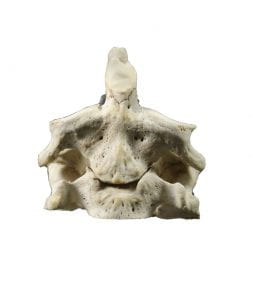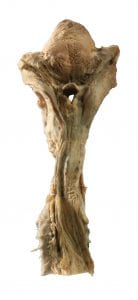Specimen of the Week 383: Fracture of the odontoid process
By ucwehlc, on 14 June 2019
This blog was written by Lily Garnett, volunteer at the UCL Pathology Museum
These human remains tell a true story of murder, attempted suicide and the understanding of mental health in 1855.
It is rare for human remains within pathology collections to bear the name of the individual they were once a part of in life. In historic collecting this is most probably due to a collector’s medical interest in a pathology as a ‘specimen’, disassociating it from the reality that it was once part of a person with feelings, thoughts and family. Moreover, in the past the maintaining of deceased individuals often went unmonitored. Until as late as a public enquiry in 1999, with a focus being on the Alder Hey Hospital in Liverpool, the vast majority were unaware that hospitals were retaining patients’ organs without consent. This ultimately led to the Human Tissue Act 2004, which is monitored by the Human Tissue Authority. Now, any institution holding human remains that are less than 100 years old since the death of an individual legally require a license.
 Close
Close




